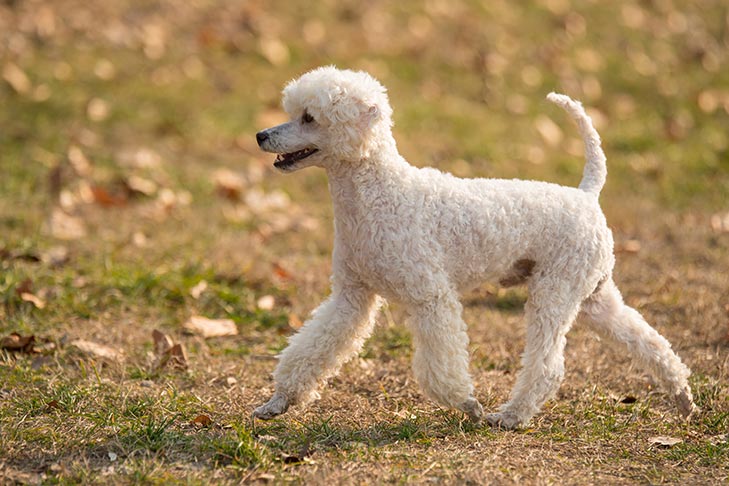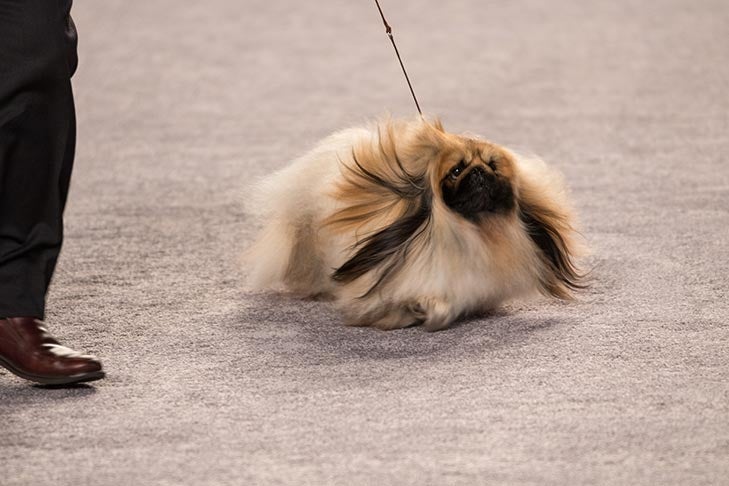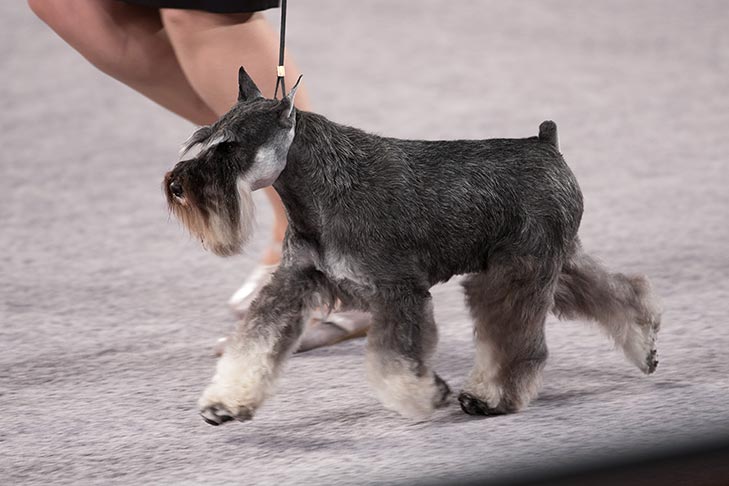- pekingese
- cocker spaniel
- basset hound
- dog breeds
- most popular
- beagle
- german shepherd dog
- poodle
- chihuahua
- most popular breeds
- collie
- miniature schnauzer
- dachshund
The Poodle, recognized by the AKC in 1887, did not make the top ten breeds until the 1950s, when it ranked number seven. This glamorous show dog and companion strutted into the number-one position in the 1960s and would become the first breed to hold the number-one crown for two consecutive decades. German Shepherd Dogs, the number-one breed of the 1920s, secured the number-two spot for the 1960s and the 1970s.
1. Poodle

The Poodle is supposed to have originated in Germany. However, for years, it has been regarded as the national dog of France, where it was commonly used as a retriever. The English word “poodle” comes from the German “pudel” or “pudelin,” meaning “to splash in the water.”
2. German Shepherd Dog

Derived from the old breeds of herding and farm dogs, the German Shepherd Dog has been subject to intensive development. For centuries, the breed has been considered a loyal servant and companion. The GSD is also distinguished for its courage and ability to assimilate and retain training for such special services as police work and as a guide dog for the blind.
3. Beagle (13 and 15 inches)

The actual origin of the Beagle seems to be obscure because of the absence of reliable documentation on the earliest days of development. The turning point for American Beagles came in the 1860s, when dogs from a well-bred strain in England were imported to inject a beautiful breed type.
4. Dachshund (Longhaired, Smooth, and Wirehaired)

The Dachshund can be found in historical accounts dating back to the 15th, 16th, and 17th centuries. In this period, illustrations reflected badgers being hunted with dogs with elongated bodies, short legs, and hound-type ears. Early in the 17th century, the name Dachshund (or “badger dog”) became the designation of a breed type with smooth and longhaired varieties. In 1890, wirehairs were added as a third variety.
5. Chihuahua

Legend and history are rich in tales of the ancestors of the present Chihuahua. They’re described as a popular pet, as well as a religious necessity. The Chihuahua Club of America was formed in 1904.
6. Pekingese

The earliest known record of the Pekingese, also known as the “Lion Dog,” is traced to the Tang Dynasty in China in the 6th century. Breeding of these little dogs reached a zenith during the Tao Kuang period (1821-1851). The oldest strains of the breed were kept amazingly pure. Imperial Dog Books, illustrated with pictures of the most admired dogs, were used as the standards.
7. Collie (Smooth and Rough)

The precise origin of the Collie remains an enigma, but the two varieties, the rough-coated and the smooth-coated, existed long ago in the unwritten history of the herding dogs of Scotland and northern England. Prior to the past two centuries, both varieties were strictly working dogs without written pedigrees.
8. Miniature Schnauzer

The Schnauzer is of German origin, said to be recognizable in pictures of the 15th century. Miniature Schnauzers were bred down from their larger cousins, Standard Schnauzers. Aside from the size difference, the two breeds look much alike.
9. Cocker Spaniel (American, All Colors)

The spaniel family is a large one of considerable antiquity. As far back as the 14th century, we have mention of the Spanyell, which came to be divided into water and land spaniels. Further divisions in land spaniels were based on size. “Cockers” were the smaller of the two types of spaniels and to this day the Cocker Spaniel is the smallest in the Sporting Group.
10. Basset Hound

“Basset,” as applied to a breed of dog, derives from the French adjective “Bas,” meaning “low thing” or “dwarf.” In the U.S., it was thought that George Washington owned Basset Hounds presented to him as a gift by Lafayette after the American Revolution. In 1935, the Basset Hound Club of America was organized. Instantly recognizable due to their big, heavy body, short legs, and long ears, Basset Hounds have proven themselves to be multi-purpose dogs.

